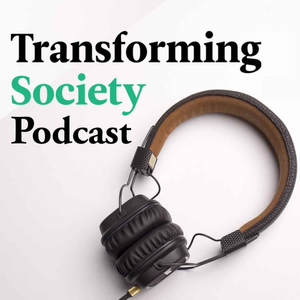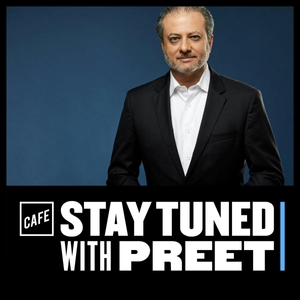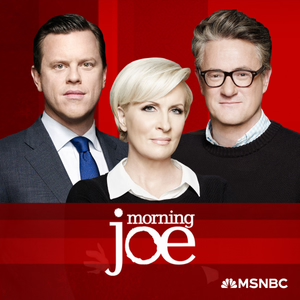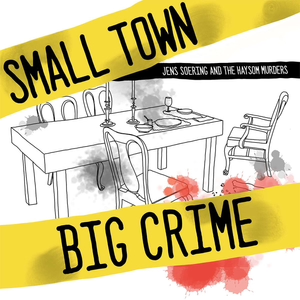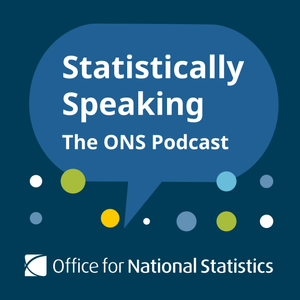
Introducing Statistically Speaking
01/24/22 • 1 min
Statistically Speaking is the Office for National Statistics' regular monthly podcast, offering in-depth interviews on the latest hot topics in the world of data, taking a peek behind the scenes of the UK’s largest independent producer of official statistics and exploring the stories behind the numbers.
Statistically Speaking is the Office for National Statistics' regular monthly podcast, offering in-depth interviews on the latest hot topics in the world of data, taking a peek behind the scenes of the UK’s largest independent producer of official statistics and exploring the stories behind the numbers.
Next Episode

A survey like no other: Tracking the spread of COVID-19 in the general population
Since April 2020, the Coronavirus (COVID-19) Infection Survey has provided vital weekly snapshots of the level of SARS-CoV-2 virus circulating within the community. We’re joined by three central figures in the project, Ruth Studley, Tina Thomas and Professor Sarah Walker, for the inside story on one of ONS’s most ambitious surveys, set up in a matter of weeks as the pandemic took hold. (This episode was recorded in September 2021, before the emergence of the Omicron variant) Transcript:
Miles Fletcher, Head of Media and Public Relations at the ONS
Numbers, numbers everywhere, but here we’ll take some time to think about where they come from what they mean, and where they're going. Welcome then to the first episode of statistically speaking the new official podcast from the UK’s Office for National Statistics. In this series the nation's number crunchers, as some people still insist on calling them, chew the fat and spill the beans on the stories behind the stats. Lately, they've been making headlines, some would say ruling our lives, like never before.
I'm Miles Fletcher and in this first episode we'll be looking at how millions of swab tests and finger prick blood tests allowed the Office for National Statistics and its partners to track the progress of COVID-19 across the UK. During the pandemic, the COVID infection survey has proved a vital source of regular data on Coronavirus infections, antibodies and symptoms. We'll hear why this huge study was needed in the first place, how it was set up in double quick time and what it's told us about the virus and its human impacts, and why it remains important now.
Joining us are three central figures in the project: Tina Thomas, who runs the survey operation itself, leading a force of thousands of study workers out gathering data in the field; Ruth Studley Head of Analysis for the ONS, whose job it is to turn those test results into fast statistical estimates that we hear about in the news every week; and from the University of Oxford, the chief investigator and academic lead of the infection survey, Professor Sarah Walker. Sarah, to start with you first, how did this study get underway? And well, why was it needed in the first place?
Professor Sarah Walker, Chief Investigator and Academic Lead for the COVID-19 Infection Survey
So it was back in April 2020, when a lot of people had, you know, been sick with COVID in the first wave. But we really didn't know how many because at that point, we didn't have the PCR tests that are done in the laboratories, we didn't have the tests on a stick, the lateral flow test that lots of people do before going to school or work. And we really have no idea how many people had actually already had COVID. And at the time, there was actually a hope that we might even be close to herd immunity then. And so initially, in the middle of April, the infection survey was first of all a study looking for antibodies in the blood. And the initial plan was to sample just around a thousand households in the first month, then a further thousand households a month for a year to just find out how many people had had COVID already. But over literally the course of two or three days from the 17th to the 19th of April, we realized that actually, we didn't know so much more, in particular about how many people were infected without having any symptoms, how many people were passing it on to other people in their household, how many children were infected. And very rapidly, the survey increased to sampling over 11,000 households in the first month with an initial plan to then resample another 11,000 households a month for a year.
Miles Fletcher
Quite simply, you needed to have that representative sample of the whole population, it wasn't enough just to rely on people coming forward who suspected they had COVID.
Sarah Walker
Well, exactly, because what we cared about was what was really going on in the community. And it's well known that people who come forward for testing tend not to represent their communities completely. And so this was why initially, just because we had to get going so fast, we did actually approach at random people who had been in previous ONS surveys and said they would be interested in taking part in future research. But very quickly, we moved to just sampling from addresses. So, to really get a completely random sample of people living in private households across the UK.
Miles Fletcher
And how did that connection with the ONS come about? Because it's a new departure for the ONS, we normally measure the economy and migration and so forth, but not medical testing. So how did that partnership get started?
Sarah Walker
So, I really think it was a case of everybody just working as hard as they could together to make this happen fast. And what ONS do have huge experience with is these very large population representat...
If you like this episode you’ll love
Episode Comments
Generate a badge
Get a badge for your website that links back to this episode
<a href="https://goodpods.com/podcasts/statistically-speaking-282688/introducing-statistically-speaking-35401869"> <img src="https://storage.googleapis.com/goodpods-images-bucket/badges/generic-badge-1.svg" alt="listen to introducing statistically speaking on goodpods" style="width: 225px" /> </a>
Copy

